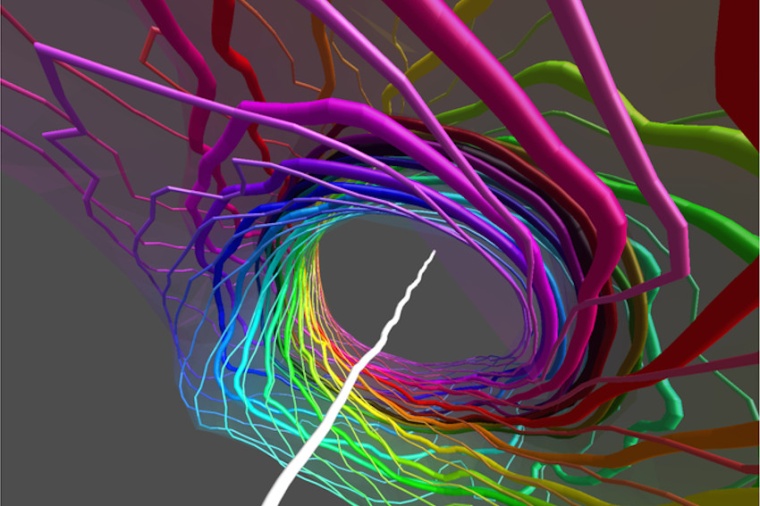Measuring skyrmions in three dimensions
An international team of researchers experimentally created a topological 3D skyrmionic hopfion in fully structured light.
Scientists at the University of Birmingham have succeeded in creating an experimental model of an elusive kind of fundamental particle – a skyrmion – in a beam of light. The breakthrough provides physicists with a real system demonstrating the behaviour of skyrmions, first proposed 60 years ago by a University of Birmingham mathematical physicist, Tony Skyrme.

Skyrme’s idea used the structure of spheres in 4-dimensional space to guarantee the indivisible nature of a skyrmion particle in 3 dimensions. 3D particle-like skyrmions are theorised to tell us about the early origins of the Universe, or about the physics of exotic materials or cold atoms. However, despite being investigated for over 50 years, 3D skyrmions have been seen very rarely in experiments. The most current research into skyrmions focuses on 2D analogues, which shows promise for new technologies. In a new study, the international collaboration between researchers at the University of Birmingham, Lancaster, Münster (Germany) and RIKEN (Japan) has demonstrated for the first time how skyrmions can be measured in three dimensions.
Mark Dennis, who led the research, said: “Skyrmions have intrigued and challenged physicists for many decades. Although we’re making good progress investigating skyrmions in 2D, we live in a 3D world. We need a system that can model a skyrmion in all its possible states in a way that could be measured. We realized that a beam of light could be harnessed for this purpose because we are able to closely control its properties, and so use it as a platform to model our skyrmions. With this approach, we can start to truly understand these objects and realise their scientific potential.”
To create their model, Danica Sugic and Mark Dennis, in the University’s School of Physics and Astronomy, cast the standard description of light, the polarization and phase in terms of a sphere in 4-dimensional space, crucial to Skyrme’s original vision. This then allowed the skyrmion field to be designed and engineered into a beam of laser light in an experiment led by Cornelia Denz, University of Münster. The team used cutting-edge measurements to determine the precise structure of the skyrmion.
“These objects are actually quite intricate, from a geometric point of view,” said Sugic. “They resemble a complex system of interlocking rings, with the whole forming a particle-like structure. What’s particularly interesting is the skyrmion’s topological properties – they can be distorted, stretched or squeezed, but will not come apart. This robustness is one of the properties that scientists are most interested in exploiting.” (Source: U. Birmingham)
Link: Theoretical Physics Group, School of Physics and Astronomy, University of Birmingham, Birmingham, UK











